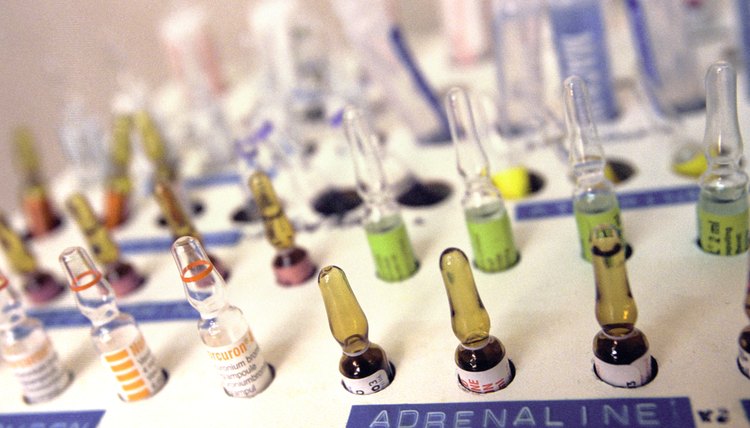Chemicals Released in Your Body When You Workout Your Legs

When you work out, you tend to feel good. This is due to chemicals called hormones that are released when you’re physically active. Most forms of aerobic and endurance exercise involve moving your legs. For example, walking, running, cycling and swimming are all examples of aerobic and endurance exercise. However, it’s important to note that it’s not the legs themselves that trigger the release of chemicals into your body. Rather, it’s the combined effect of the whole body being active.
The Rush of Feeling Good
Aerobic and strength-training exercises involving the movement of your legs will primarily increase levels of hormones called catecholamines into your body. These chemicals are produced by your adrenal glands located at the top of your kidneys. The feel-good hormone dopamine, norepinephrine and adrenalin (epinephrine) are the common catecholamines released during physical activity. Increased levels of catecholamines lead to higher levels of blood glucose and skeletal muscle.
Pumping You Up
Secondary hormones released during exercise include adrenocorticotropic hormone (ACTH), which is released from the pituitary gland in your brain, and the thyroid-stimulating hormone TSH, which affects how weak you feel. This hormone can also contribute to excessive weight loss or gain. Increases in testosterone in both men and women are common, and estradiol (estrogen) and progesterone, which are produced in the ovaries, can affect women during the menstrual cycle. A chemical released more commonly in people who work out less often is growth hormone (GH).
Staying Alive and Hydrated
When you exercise, you lose water and salt through your sweat. To combat this, your body increases its levels of renin-angiotensin-aldosterone, a hormone that regulates your water and blood levels and allows you to retain salt (sodium) that may otherwise be lost through sweating. Renin-angiotensin-aldosterone works alongside the antidiuretic hormone (ADH), allowing you to retain some water in your body.
Exercise More to Eat Less
The final chemicals released when your legs and body are engaged in exercise are the peptide hormone glucagon, which increases your blood glucose levels; the peptide hormone insulin, which regulates the metabolism of fat and carbohydrates in your body; and a hormone called ghrelin, which is secreted in your stomach. A study in 2009 by David R. Broom, Rachel L. Batterham, James A. King and David J. Stenseland, published by the American Physiological Society, showed that aerobic and resistance exercise suppressed hunger for a short period after physical activity due to the release of ghrelin, which helps to regulate your appetite.
References
- Centers for Disease Control and Prevention: Physiological Response and Long-term Adaptions to Exercise
- Medline Plus: Catecholamines
- Medline Plus: ACTH
- Lab Tests Online: TSH
- American Physiological Society: Influence of Resistance and Aerobic Exercise on Hunger, Circulating Levels of Acylated Ghrelin and Peptide YY in Healthy Males: Discussion
Writer Bio
Steven Lowis is a teacher of metaphysics, as well as a writer covering a wide range of topics. He specializes in the areas of quantum theory, physics, biology, health and fitness, psychology, theology and philosophy. He has released a book titled "The Meaning of Life - Understanding Purpose and the Nature of Reality."
